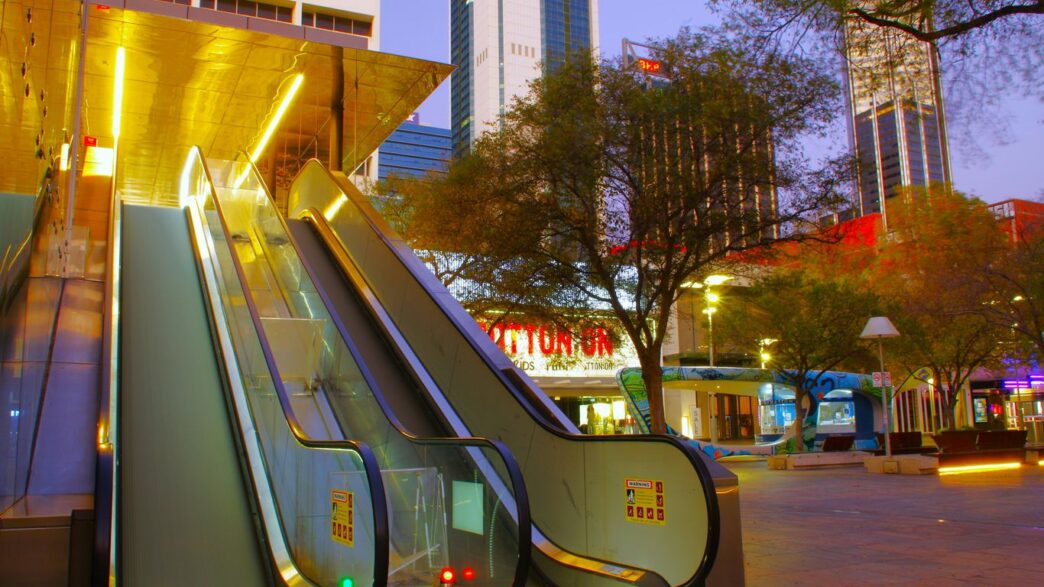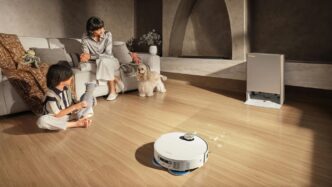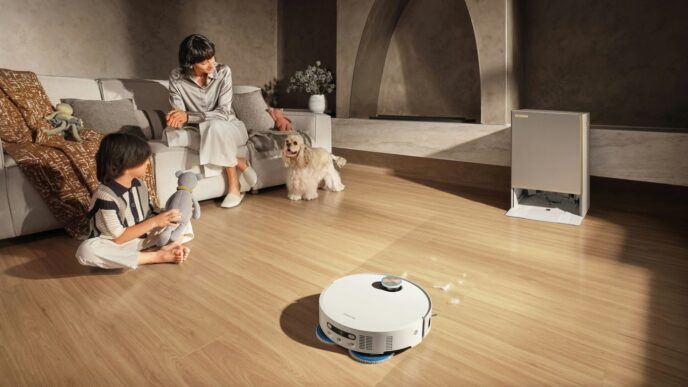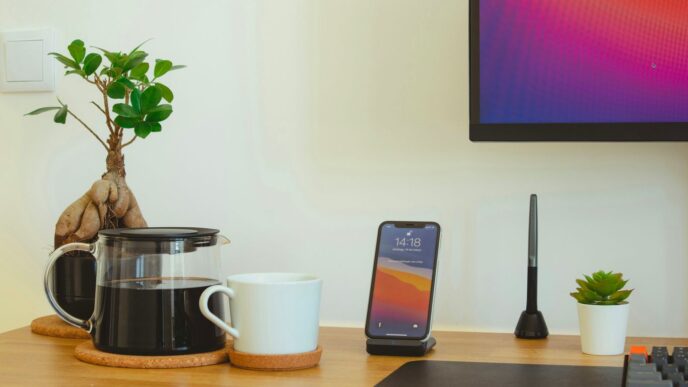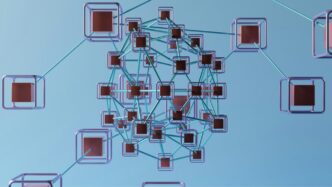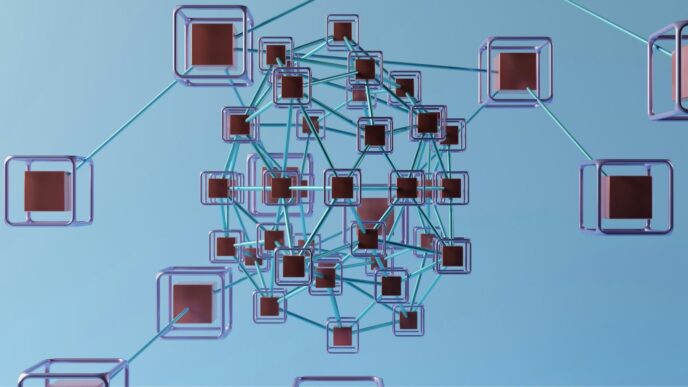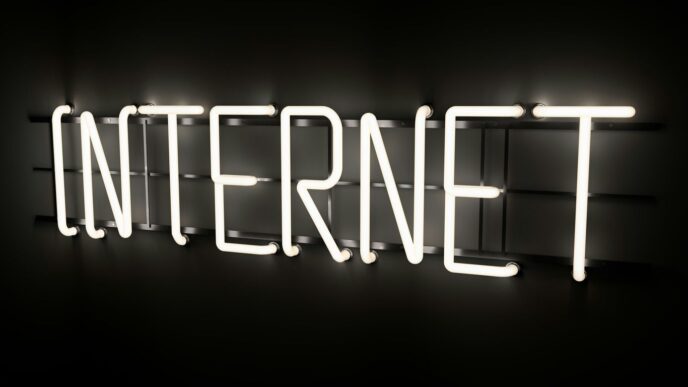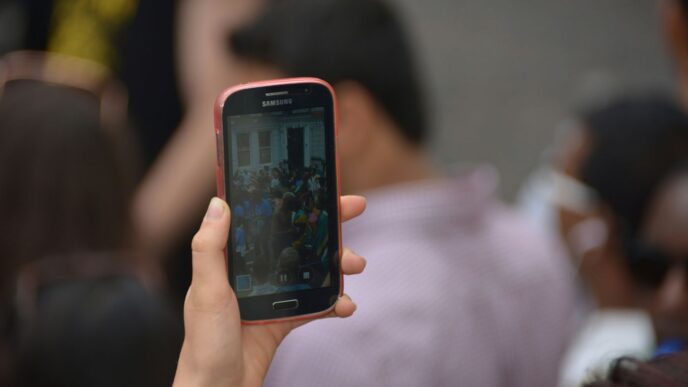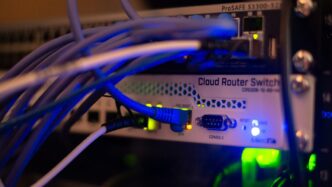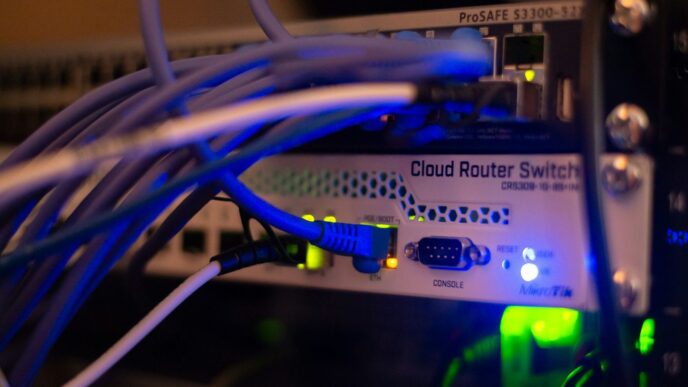IoT Transport as the Backbone of Smart Mobility

The way we get around has seriously changed over the last few years, and at the root of it all is IoT transport. Think of IoT as the glue that holds together all the modern mobility options we’ve got now—cars, buses, scooters, you name it. It connects vehicles, manages data between roads and devices, and helps everyone move around more easily in cities that can get really crowded.
Enabling Seamless Data Exchange Across Networks
It’s wild how every part of transportation seems to talk to each other now. Buses, streetlights, and even crosswalk buttons are all connected through IoT. In 2025, almost every city bus, ride-share car, and even bikes use sensors that send live updates. Here’s what makes this possible:
- Every vehicle and piece of infrastructure has built-in sensors for constant updates.
- Traffic signals and vehicles share data, adjusting routes or lights based on real-time needs.
- Mobile apps let users see arrival times, traffic jams, or even pollution levels with up-to-the-minute accuracy.
If you want to see how car and driver technologies have evolved, features once considered futuristic are pretty much standard now thanks to this constant flow of information.
Integrating Vehicles with Urban Infrastructure
Gone are the days when cars just drove on roads without paying attention to the world around them. Now:
- Smart traffic lights adjust timing based on actual road congestion.
- City-wide wireless networks let public transport and emergency vehicles signal priority, cutting through traffic quickly.
- Sensors on roads track congestion, temperature, and even detect potholes, which the city can then fix faster.
There’s an ongoing push to connect charging stations, bike docks, and parking spaces into these networks, too. This makes travel simpler—and honestly, it’s less frustrating when you’re not circling for a parking spot for 20 minutes.
Building Real-Time Connectivity Solutions
Real-time data is the game-changer. We’re not waiting around for daily traffic updates anymore. Instead, IoT systems send instant alerts on delays, accidents, or breakdowns, allowing both drivers and city managers to react fast. Here’s a quick look at why real-time matters:
| Feature | Impact Summary |
|---|---|
| Live traffic and route info | Fewer traffic jams, faster commutes |
| Automatic emergency response alerts | Faster, safer help when things go wrong |
| Vehicle-to-vehicle (V2V) communication | Reduces crashes, boosts road safety |
The thing is, all this connection isn’t just for convenience. It lets cities and businesses predict problems before they explode—for example, rerouting buses during a breakdown without waiting for things to back up. In short, IoT-powered transport is what’s making smart mobility actually work, block by block, day by day.
Advancements in Connected Mobility Through IoT Transport
Enhancing Fleet Operations and Route Optimization
Logistics and mobility services are getting smarter thanks to IoT. Sensors in vehicles and on the roads constantly send information about location, speed, and road conditions. Fleet operators now have real-time views of where their vehicles are, letting them make adjustments practically on the fly.
Key improvements include:
- Algorithms use live data to suggest better routes, which saves both time and fuel.
- Traffic information updates instantly, helping drivers dodge delays.
- Route deviations get flagged immediately, so dispatchers can respond quickly.
It’s not just about knowing where vehicles are, either. Next-gen vehicle connectivity apps make sharing and managing cars more practical by supporting features like digital keys and remote monitoring.
Leveraging IoT for Predictive Vehicle Diagnostics
The days of surprise vehicle repairs are fading out. IoT-enabled sensors keep a constant watch on vehicle health. They monitor:
- Engine temperature and performance metrics.
- Brake and tire condition.
- Battery levels, especially important for electric fleets.
This steady stream of data helps fleet managers schedule maintenance before a problem leads to a breakdown. Over time, this kind of early warning beats traditional scheduled servicing by a mile because it reacts to actual conditions, not just mileage.
| Diagnostic Methods | Breakdown Risk | Maintenance Cost |
|---|---|---|
| Regular (fixed intervals) | Medium | Medium |
| Predictive (IoT-based) | Low | Low |
Creating Resilient Transportation Ecosystems
Transportation isn’t just more connected, it’s also more stable. IoT creates resilient networks by:
- Making it easier to track patterns across many vehicles for early signs of trouble, like bottlenecks or repeated vehicle faults.
- Speeding up the response when incidents occur, as alerts go out right away.
- Allowing different systems—traffic lights, buses, emergency vehicles—to coordinate automatically.
A strong IoT network means fewer surprises. Fleets recover faster from problems, and the whole system adapts to disruptions better than older setups could. There’s still room to grow in this field, but as we head deeper into 2025, IoT’s influence is clear in almost every corner of connected mobility.
Transforming Urban Environments with IoT-Driven Smart Cities
Smart cities are getting a serious upgrade with IoT transport solutions in 2025. It’s kind of wild to see how everyday commuting is shifting—all thanks to sensors, connectivity, and a ton of real-time data. IoT isn’t just about gadgets any longer; it’s basically turning our cities into living, breathing systems that can react and adapt almost instantly. Let’s check out what’s happening in three main areas:
Optimizing Traffic Flow and Reducing Congestion
Busy streets and never-ending traffic jams—most city folks know that pain. But IoT is shaking things up. Here’s how:
- Smart traffic signals change based on live conditions, instead of being stuck on a timer.
- Adaptive street lights can shift brightness or timing for pedestrians and cyclists, not just cars.
- Connected vehicles and public transit systems “talk” to each other to keep intersections clear and stop backup before it starts.
A good example? Places like London and Singapore are already seeing results by weaving in smart traffic systems and alternative mobility options. Integrated micro-mobility—like city-run e-scooters—slots into this network and keeps things moving. For more about these game-changing advancements, check out human-like robots and no-touch interfaces.
Real-Time Pollution and Energy Monitoring
It’s not enough to just move cars faster—we’ve got to keep an eye on air quality and energy, too. True smart cities use:
- Air quality sensors on street lights, buses, and even ride-share vehicles.
- Data streams that flag pollution spikes right away so city services can react.
- Tracking tools for energy use across public and private transport, highlighting where electric buses or hybrids are making a difference.
Here’s a quick view of what’s being measured:
| Sensor Type | What It Monitors | Where It’s Used |
|---|---|---|
| Air Quality Sensor | NO2, PM2.5, CO2 | Street corners, buses |
| Energy Logger | Power usage, load sinks | EV charging stations |
| Noise Level Meter | dB(A) | Intersections, squares |
Tracking all this lets city planners shut down problem areas, alert the public, or tweak policies. It’s a way to protect everyone’s health, not just keep GPS routes running smooth.
Improving Public Transit Through IoT Integration
Public transit is finally starting to catch up with the rest of our tech. IoT systems are making a mark by:
- Giving real-time bus/train arrivals to riders via apps or digital signs.
- Coordinating buses to avoid bunching up or leaving big gaps.
- Instantly spotting broken escalators, crowded stops, or missed runs, so problems get fixed quicker.
Good IoT-driven transit means shorter waits, more reliable connections, and better planning for everyone—including people with disabilities. Plus, the data gathered feeds into city policies and even helps shape which routes get funding.
It’s a lot to take in, but basically: IoT is no longer just cool tech. It’s what’s making urban life work for more people, day by day.
IoT Transport Solutions for Sustainable and Eco-Friendly Mobility
As we move into 2025, more people are noticing how the smallest sensors and real-time data can nudge our cities toward cleaner, smarter movement. It’s not just about faster commutes anymore. When IoT is added into everyday transportation, suddenly there’s a real shot at making mobility good for the planet, too.
Reducing Emissions with Smart Traffic Management
Congestion isn’t just annoying—it cranks out pollution. IoT-powered traffic signals and sensors help keep cars moving, cutting down on wasted fuel and CO₂ emissions. How does this actually show up?
- Sensors track vehicle flow and adjust signals to keep things moving
- Real-time data directs drivers to less crowded routes, shortening trips
- Fewer stops and starts means less time idling
Here’s a look at what smart traffic management can do:
| Scenario | Conventional (No IoT) | With IoT-Driven Traffic Systems |
|---|---|---|
| Avg. intersection wait (s) | 45 | 15 |
| CO₂ emissions (g/vehicle) | 380 | 255 |
| Fuel use (ml/min) | 70 | 52 |
Even minor changes add up, especially across thousands of vehicles.
Enabling Electric and Autonomous Vehicle Adoption
You can’t just throw a bunch of electric or robot cars onto the road and call it sustainable. These next-gen vehicles need support—and IoT is the glue holding everything together. Here’s what IoT does for electric and autonomous vehicles:
- Monitors battery health and charging network usage in real time
- Guides drivers to available charging stations (no guesswork or wasted trips)
- Syncs autonomous vehicle movements to reduce conflict and keep traffic efficient
- Collects road and vehicle data for smarter decision-making
Thanks to IoT infrastructure, the shift to electric and self-driving fleets is picking up speed. Big changes are ahead as more folks look toward autonomous vehicles and car sharing, with millions expected to participate by the end of the decade—see how robocar sharing trends could shake things up.
Promoting Shared and Public Transport Through IoT Platforms
Shared rides and public buses won’t replace every private car, but IoT makes them so much easier that it’s starting to shift habits:
- Mobile apps use live data to show arrival times (no more guessing about late buses)
- Payment and booking are handled automatically, which speeds up boarding
- Platforms balance supply and demand, putting more shared vehicles where they’re needed
Three ways IoT boosts greener choices:
- More reliable tracking makes public transit less stressful and more efficient
- Demand-based micro-transit can fill gaps where regular buses don’t run
- Data helps cities plan routes and schedules that actually fit real-world traffic
In short, everyday travel can feel smoother and waste less fuel. The tools might sound technical, but the real change comes in cleaner air, less time stuck in jams, and better ways to get around without owning a car. If anything, 2025 looks like the year these ideas really start feeling normal on the street.
Revolutionizing Fleet Management with Advanced IoT Telematics
IoT telematics isn’t just a buzzword—it’s changing how fleets are managed day to day. With more connected vehicles and smarter sensors, companies are finding out that they can literally watch what’s happening with every truck or car while it’s on the road. Problems that once took hours or days to spot now show up instantly. This instant feedback is making fleets safer, more reliable, and way less wasteful.
Real-Time Vehicle Monitoring and Security
Old school methods meant relying on paper checklists or radio calls for updates. Now, live data streams show location, speed, and who’s behind the wheel at any given second. If a truck stops when it shouldn’t or strays off its route, dispatch gets an alert immediately. Here’s what stands out:
- GPS trackers send updates every few seconds—no guessing or waiting for phone calls
- Engine sensors warn when temperatures spike or something seems off
- Smart locks and cameras inside the cab make theft or tampering a lot harder
A quick comparison between old and new:
| Feature | Old Management | IoT-Driven Telematics |
|---|---|---|
| Location Tracking | Manual, Delayed | Real-Time, Automated |
| Security | Keys, Basic Alarms | Smart Locks, Live Video |
| Status Updates | Paper Logs, Calls | Automated Alerts |
Predictive Maintenance for Cost Efficiency
Nobody wants vehicles breaking down on the freeway in the middle of a delivery run. IoT sensors check engine health, brake wear, and even tire pressure, predicting problems before they stop everything. Here’s how it’s helping:
- Sensors pick up quirks—like higher engine temp—before drivers notice.
- Maintenance is scheduled when small issues appear, not after major failure.
- By tracking parts’ lifespans, companies can order replacements ahead of time.
Because of these steps, fleets spend less on emergency repairs and keep more vehicles rolling. Plus, mechanics can prep for repairs instead of scrambling at the last minute.
Optimizing Fuel Usage and Reducing Downtime
Fuel’s a major cost, and some of the biggest savings now come from keeping an eye on real-time fuel use. IoT sensors give dispatchers and drivers feedback about idling, possible leaks, or just plain bad routes. What’s changing?
- Fuel sensors call out weird usage (maybe someone’s siphoning, or there’s a leak)
- GPS plus traffic data can propose better routes on the fly
- Automated reports show which drivers idle most or take inefficient paths
Here’s what data-backed fuel management might look like:
| Metric | Traditional Method | IoT Telematics |
|---|---|---|
| Idling Detection | Manual, Infrequent | Real-Time Alerts |
| Route Efficiency | Static Planning | Dynamic Optimization |
| Fuel Theft/Waste | Hard to Spot | Instant Anomaly Alerts |
It all adds up to less downtime, a tighter grip on costs, and more predictable days on the road. The tech is out there—fleets just have to pick it up and put it to work.
Personalization and User Experience in IoT Transport
Connected mobility in 2025 isn’t just about robots and sensors anymore—it’s personal now. IoT transport solutions are finally making vehicles, routes, and public transit feel like they revolve around us, not the other way around. Here’s how IoT is shaking up what it means to move through our cities.
Hyper-Personalized Mobility Services
Imagine hopping into any shared car or bus and finding your favorite music, temperature set just right, and the route automatically chosen based on where you usually go. IoT has enabled mobility services to read between the lines and adapt to each rider’s needs. Some companies, like those exploring multi-modal solutions using devices such as an electric longboard that integrates with your car (Audi’s connected mobility concept), build in personalization options from the ground up. This isn’t just handy; it’s making every commute start to actually feel enjoyable.
Key areas where personalization pops up:
- Automatic profile recognition (seat position, lighting, audio)
- Tailored recommendations for transport modes based on your calendar and preferences
- In-app suggestions during your journey when schedules or traffic change
Dynamic Route Suggestions Based on Real-Time Data
Traffic changes fast. The old days of "set and forget" GPS are gone. Today, vehicles and transport apps pull information from thousands of sources—road sensors, weather feeds, data from other cars—to propose the best way to your destination while factoring in your habits and priorities (like usually avoiding highways or preferring scenic views).
A quick look at how dynamic routing improves the daily commute:
| Feature | 2020 Experience | 2025 IoT-Powered Experience |
|---|---|---|
| Route Adaptation | Manual re-routing | Instant, data-driven suggestions |
| Traffic Delay Response | Notification-only | Automatic new routes offered |
| Personal Preference | Must reset preferences | Preferences saved and learned |
Ethical Data Collection and Privacy in Connected Mobility
When cars, scooters, and buses start learning your patterns, privacy matters. IoT platforms track all sorts of data—where you go, when you travel, even who’s with you sometimes. So, how do companies handle this so users don’t get creeped out or feel exposed?
Important steps in keeping data use ethical include:
- Collecting only data necessary for improving user experience, not more
- Anonymizing travel and behavioral info whenever possible
- Giving users clear, simple privacy controls so they can opt in or out
- Following local laws and industry standards for personal data protection
At the end of the day, building trust will be the deciding factor. People want smart, helpful features, but not if it means feeling watched everywhere they go. The future of connected mobility depends on companies keeping that balance front and center.
Overcoming Challenges in IoT Transport Implementation
Implementing IoT in transportation isn’t as easy as flipping a switch. There are hurdles—sometimes really big ones. From beefing up cybersecurity to coping with old infrastructure and getting companies to change how they work, the struggles are very real. Even though the tech keeps moving forward, these problems need some honest attention if smart mobility is going to keep rolling forward.
Ensuring Data Security and Cyber Resilience
Transport systems are collecting mountains of data every second. Protecting this data from hacks or leaks is a must, but it’s not a simple job. These networks are big, spread out, and deal with everything from vehicles to traffic lights—lots of weak spots, if you think about it.
- Encryption needs to be strong and up-to-date to keep info safe as it moves between devices and networks.
- Regular system audits are key, so that outdated software and hidden vulnerabilities get found before hackers do.
- Training staff and users on basic cybersecurity tips (like knowing what a phishing scam looks like) can close the gap on human mistakes.
| Threat Type | Potential Impact | Example |
|---|---|---|
| Device Hijacking | Service disruption, loss of control | Traffic gridlock |
| Data Breaches | Personal data leaks, financial loss | User route info exposed |
| Denial of Service | System outages | Transit schedules offline |
Navigating Regulatory and Infrastructure Barriers
One of the harder parts about bringing these new systems into cities or onto roads is dealing with old rules and physical setups that just aren’t ready for smart tech.
- Legacy systems can’t always "talk” to new technology, so upgrades or total replacements are sometimes needed.
- Different countries, or even states, might have their own data-sharing laws. If everyone’s playing by different rules, things get complicated fast.
- Approvals and safety certifications can drag on for months, slowing down how quickly solutions can roll out.
Governments and tech leaders need to collaborate, so standards don’t clash and smart transport can keep spreading.
Managing Change in Traditional Transport Industries
A lot of people are nervous about letting go of old routines, especially in industries that have done things the same way for ages. Rolling out IoT means more than just putting sensors on buses—it’s about getting everyone on board with a new way of working.
- Workers need solid training if they’re going to use the new tech well.
- There’s worry about automation leading to lost jobs, which means honest communication is needed from companies.
- Smaller operators may face high upfront costs and technical confusion.
Sometimes, the most important step is just listening—to drivers, commuters, and operators—so that worries are sorted out before they turn into roadblocks.
In short, bringing IoT to transportation has its tough spots, but these are fixable with teamwork, open-mindedness, and a plan that puts people first.
Conclusion
So, looking at where things are headed, it’s pretty clear that IoT is changing the way we get around. By 2025, we’ll probably see more connected vehicles, smarter traffic systems, and apps that make getting from point A to point B a whole lot easier. Cities are already starting to use sensors and real-time data to manage traffic and keep things running smoothly. For businesses, this means there’s a lot to keep up with, but also a lot of new chances to grow. Sure, there are still some bumps in the road—like making sure data stays private and figuring out how to get everyone on board—but the benefits are hard to ignore. If you’re in the transport world, now’s the time to start thinking about how IoT can fit into your plans. The future of mobility is coming fast, and it’s looking pretty smart.


